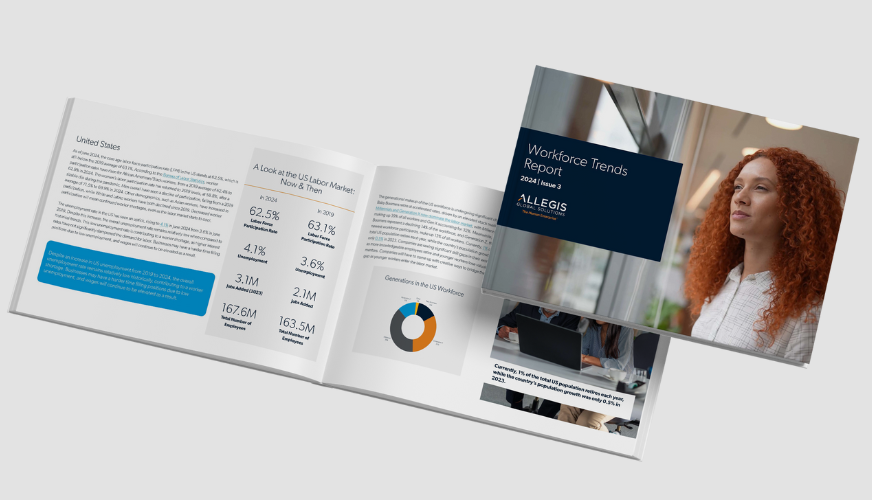Trends & Transformations: A Five-Year Labor Market Analysis
The COVID-19 pandemic was a global crisis that drastically affected all walks of life and impacted society more than any other phenomenon in decades. Over a three-year period, economies across the globe would navigate rising inflation fueled by government rescue spending. This led to an increase in demand for workers that further placed upward pressure on wages and, eventually, increased the price of goods and services. Moreover, markets remained volatile due to ongoing geopolitical conflict, supply chain disruption, soaring gas and energy prices, and historic monetary policy increases.
Fast forward to today – 2024 – and we remain fixated on inflation and labor market data as central banks across the globe contemplate when to cut rates. However, labor market indicators can display conflicting signals. And, with the economy constantly changing, it’s difficult to predict future workforce trends. When forecasting, we're faced with several questions. Should we continue to compare today's labor market trends with pre-pandemic levels? How have labor markets changed from 2019 to 2024? And, what is this "new normal" that we continue to reference?
In the most recent issue of the Allegis Global Solutions (AGS) Workforce Trends Report, we dive into employment metrics from across the globe to illustrate how the labor market has evolved over the past five years as it relates to:
- Labor supply – As the global population ages, a larger proportion of people are retiring, leading to a decrease in the overall labor force.
- Labor demand – The global demand for labor remains influenced by several trending key factors that differ greatly from country to country.
- Wages – The pandemic had a notable impact on wage growth, stemming from a perfect storm created by the e-commerce boom, the Great Resignation and record high inflation.
- Productivity – Worker productivity has been closely monitored by organizations in the years following the pandemic to better understand the impact on their workforce. Employers are seeking to grasp how remote work, AI and other technologies have influenced worker productivity.
- Legislation – Several recent legislative updates address key workplace issues, such as the consideration of new regulations on the use of AI in employment around the globe.

.png)
